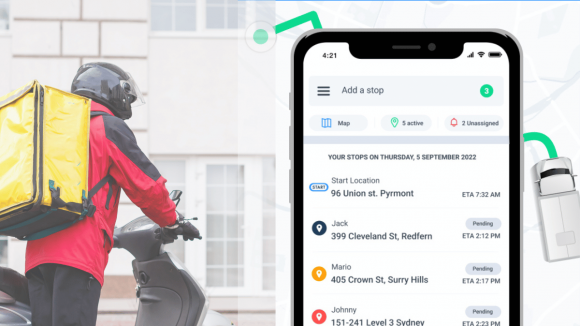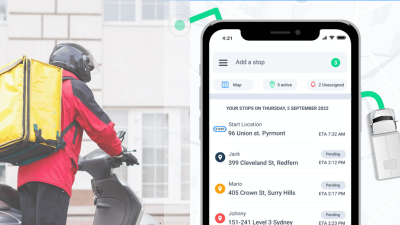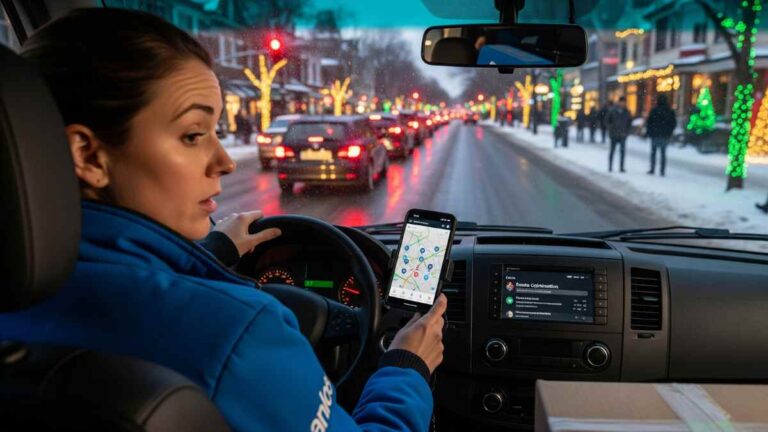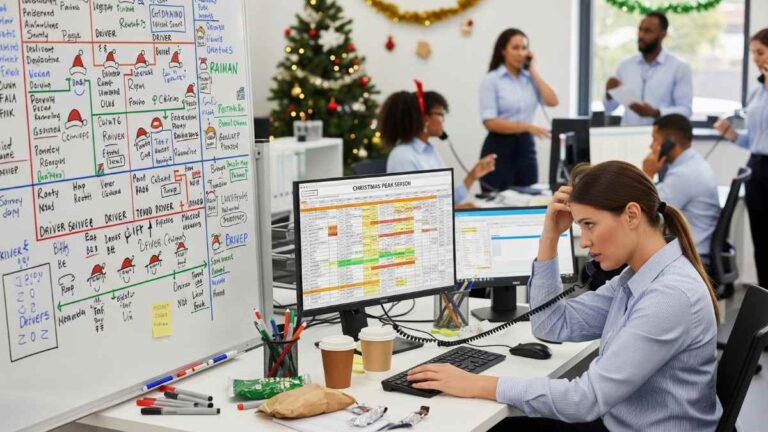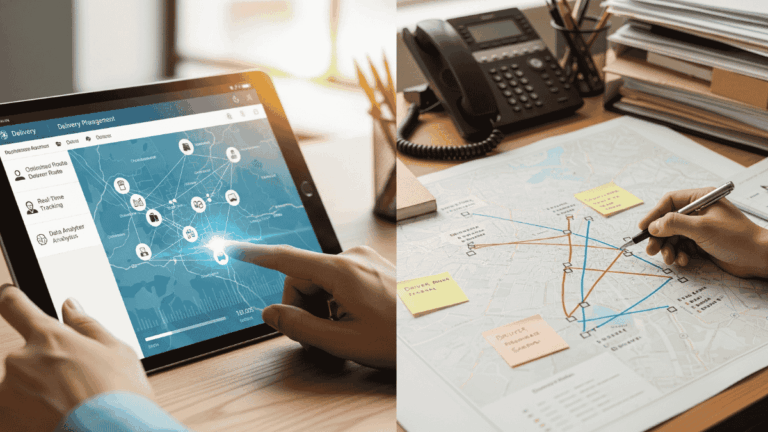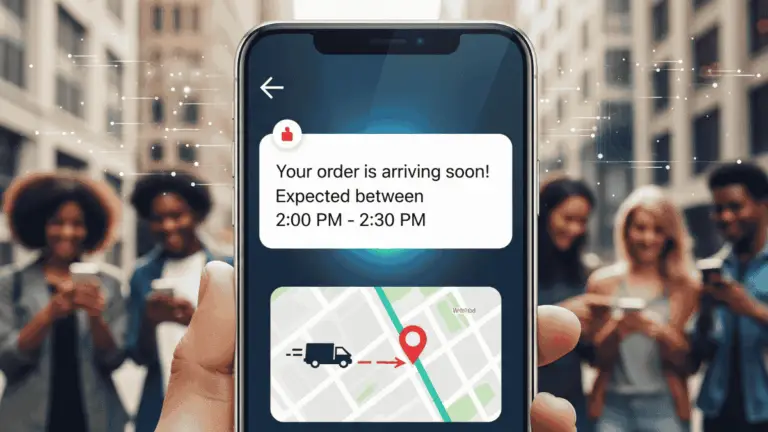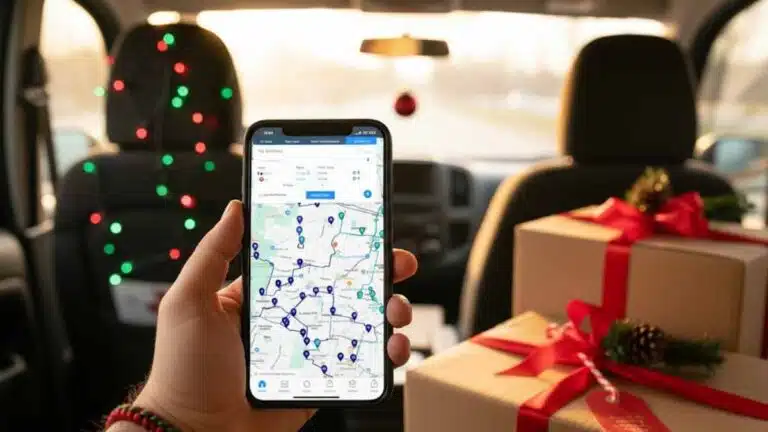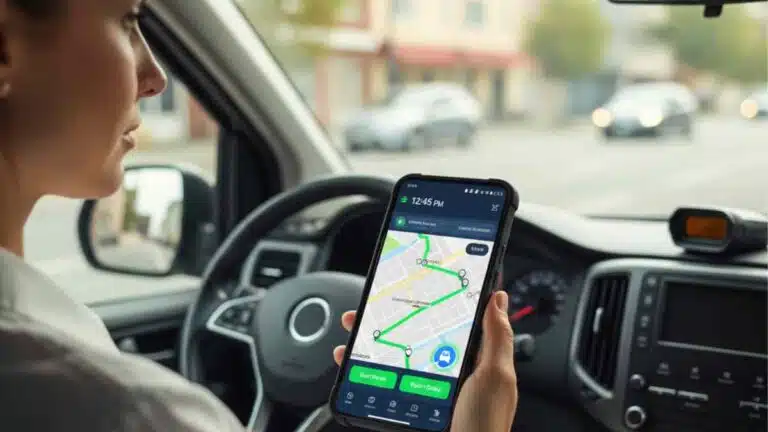In a world where 2.71 billion people shop online globally, fast and reliable last mile delivery can make all the difference.
The last step of the delivery process is usually the most complex and expensive part: getting the orders to the customers on time, with the fastest route at a minimal cost.
Getting that package to your customer’s door, living up to the shopper’s expectations, and meeting industry standards are like a maze of tight delivery windows, unpredictable traffic, last-minute changes, and logistical challenges.
Each factor adds complexity, and one wrong turn can lead to delays, higher costs, and dissatisfied customers. These issues can lead to customer complaints, bad word of mouth, or reviews that can cost you your business.
In this article, you’ll learn why it’s important for a business to streamline the process with last mile delivery software and how to consider the best software on the market.
Understanding last mile delivery
What does ‘last-mile delivery’ mean?
The final mile typically starts when a parcel arrives at the local distribution hub or fulfillment center. It’s usually the last stop before a package reaches the customer.
It can also be a warehouse, retail store, or delivery facility. The delivery process ends when the package is successfully delivered to the given address.
However, there are more alternative final destinations these days, like pickup points. (We’ll explore these in detail in this article, with 11 different last-mile delivery speed options.)
Why is last mile delivery so important?
The final stage is often the most complex and expensive part of the supply chain. It involves navigating urban environments, managing multiple stops, and meeting tight delivery windows.
Many small businesses try to handle the process manually in the beginning, but this only slows it down and allows for multiple mistakes.
Without real-time tracking during the last mile, neither you nor your customer know where the deliveries are.
Not using software to send live tracking links to customers or being able to communicate with drivers can cause missed or late deliveries.
For businesses, efficient last mile delivery is vital because it directly impacts:
- Customer satisfaction: Late or incorrect deliveries can hurt your brand’s reputation. 99% of customers look for reviews when they shop online. Half of customers trust reviews as much as brands recommend family or friends.
- Operational costs: Last mile logistics are often the most expensive part of the delivery process, accounting for up to 53% of total shipping costs.
- Competitiveness: Offering faster delivery times can set you apart from competitors. According to research, more than 30% of customers want next-day delivery.
Here is a breakdown of what makes customers shop online according to Oberlo.
Challenges of last mile delivery
Several factors contribute to the complexity of last mile delivery, making it a challenging aspect of logistics to manage effectively.
Remember the maze of tight delivery windows, unpredictable traffic, last-minute changes, and logistical challenges we spoke about?
Here are some of the factors that make the process so difficult.
- Unpredictable traffic and road conditions: Deliveries in urban areas often encounter traffic jams, road closures, and other disruptions. Poor weather conditions also significantly impact the roads.
- High delivery density: Multiple stops in close proximity can create inefficiencies if not planned properly. Consider a food delivery service during breakfast, lunch, and dinner. This can also increase when more orders are made during Black Friday or Christmas.
- Customer availability: If a customer isn’t available to receive the package, the delivery may need to be rescheduled, leading to delays and additional costs. Sometimes, an attempted delivery can also occur when a driver has the wrong or incomplete address.
- Environmental sustainability: Companies are under increasing pressure to reduce their carbon footprint. Green logistics are being prioritized by many companies, finding ways to ensure the shortest routes are chosen, to avoid contributing to higher emissions.
How do delivery costs affect profitability?
The expenses associated with last mile delivery can significantly cut into profit margins. Think about the fuel, labor, and vehicle maintenance.
Many companies struggle to balance the cost of the deliveries and stay competitive by offering free or reasonable same-day delivery.
According to a McKinsey & Co. study, same-day delivery costs charged to consumers range from $5 to $20 per shipment.
“But the willingness to pay such high prices is limited,” says the report. Customers are used to subsidizing total shipping costs and are reluctant to pay extra for it.
10 Types of last mile delivery options
1. Same-day delivery
Same day delivery is an obvious one. It’s when the package reaches the customer on the same day they place their order. Usually, this is when an order is placed before a certain cut-off point in the late afternoon to ensure it can still reach the customer before the end of the day.
This is a popular option for e-commerce customers. However, it is more expensive, not only for the business but also for the customer.
According to Statista, 46% of customers are willing to pay extra for faster deliveries, especially same-day.
2. Next-day delivery
Next-day delivery guarantees that the package will arrive by the next day after the order is placed.
Courier companies often operate during the night to ensure the parcel is on the customer’s doorstep the following day.
It’s one of the more widely used fast delivery options.
3. Two-day delivery
Retailers like Amazon often use this. For many of their customers, two-day delivery has become a standard.
It’s a perfect combination to manage the cost while also enjoying speed. If an item is not urgent, skipping those premium rates for same or next-day delivery is the best alternative.
4. Scheduled delivery
With scheduled delivery, customers can still have control over the last mile delivery process. They can choose a specific date and time window.
This is ideal for customers who might be traveling or out for work. Scheduling delivery for the weekend would make more sense.
This is particularly useful for larger items like furniture or appliances.
5. Express delivery
Express delivery is another fast shipping option that typically delivers within 1-2 days. What’s the difference between express delivery and two-day delivery?
A customer’s package will be prioritized over standard shipping methods. This is ideal for far-traveling packages, both domestic and international.
6. Standard delivery
Standard delivery is the most cost-effective option but has slower delivery times. Most online retailers use this option to send parcels.
Usually, it takes anything between 3 and 7 business days. Your location and proximity to the warehouse will determine how long it will take.
7. Pickup points (click-and-collect)
For this click-and-collect option, customers have to leave their homes or offices to pick up their orders at a physical location. This location could be a store or smart locker.
It’s still convenient for the customer, especially in cities where customers want to have the luxury of choosing which day they want to collect the parcel.
8. Eco-friendly delivery
With sustainability becoming a major focus, some businesses offer eco-friendly delivery options.
These could involve using electric vehicles, bicycle couriers, or consolidated deliveries to reduce carbon emissions. This option may take a bit longer than express deliveries but appeals to environmentally-conscious customers.
9. Locker delivery or parcel lockers
Locker delivery involves delivering packages to secure, self-service lockers placed in convenient locations like grocery stores, gas stations, or apartment complexes.
Customers are given a code to access the locker and retrieve their package at their convenience, reducing the need for home delivery and improving efficiency for couriers.
10. White-glove delivery
White-glove delivery is considered when large items or heavy electronics are delivered and require installation or are being placed inside a customer’s home.
The items will be treated with ultimate care in transit; that’s where the term ‘white-gloves’ comes from.
It offers a more personalized experience, typically with scheduled delivery windows.
How last mile delivery software solves problems
Ready to find out how you can change your struggles with late deliveries and high costs around? The answer is last mile delivery software.
WATCH: Introduction to last mile delivery software
What is last Mile delivery software?
It may sound very technical, and yes, it is, but it’s designed to be friendly to help business owners and delivery drivers easily improve their output.
The software is designed to optimize the final stage of the delivery.
Here are the benefits:
- Manage fleets
- Plan efficient routes
- Track deliveries in real-time
- Provide accurate delivery updates
Why should businesses invest in last mile delivery software?
Online shopping has grown significantly; 34% of shoppers purchase online every week, and 82% shop online every month. The demand is massive.
So whether you are a small business, medium enterprise, or large company, you must find a way to make your delivery more efficient.
5 Benefits of last mile delivery software
This is where last mile delivery software comes in. Here’s a breakdown of the key features that can improve your business drastically.
Route optimization
The software’s algorithms create the most efficient routes for your delivery. Whether it’s one delivery or 50 deliveries for that day, traffic and weather conditions are taken into account.
It helps to reduce travel time and fuel consumption at the same time.
Tracking deliveries in real-time
GPS tracking helps businesses to monitor drivers’ driving behavior, track how many deliveries have been made and ensure they stay on schedule.
Improving customer communication
Customers are given a real-time tracking link with automatic updates on the delivery status.
The information includes the estimated time of arrival and notifies when there are any unexpected delays in the last mile delivery process.
Enhancing driver productivity
The software helps drivers to follow the best-optimized routes and ensure there are no unnecessary stops made.
Reducing failed deliveries
With a more accurate delivery window, customers can make sure they are home when the delivery is made. They can also easily reschedule deliveries if they are not home, reducing the number of failed or missed deliveries.
Features to look out for in last mile delivery software
Choosing the right final mile delivery software that suits your budget is tricky. You want them all. Here is a breakdown of the best features on the market and what to look out for.
- Real-time route optimization
- Proof of delivery (POD)
- Driver tracking
- Customer communication
- Analytics and reporting
- Multi-stop route management
How does last mile delivery software improve customer experience?
You want that five star rating and review telling everyone that your brand has delivered beyond the customer’s expectation.
So here’s how last mile delivery software can make that happen.
It provides accurate delivery windows, making sure customers know exactly when they can expect their delivery. With an accurate expectation, there won’t be any disappointment.
With real-time tracking, customers can see exactly where their package is (or is stuck) and track its movement. This reduces anxiety, making the customer feel more in control and prioritized.
Some last mile solutions also simplify the return process, giving customers convenient options to get the parcel picked up from home.
How to choose the right final mile delivery software
Factors to consider when making a decision
When selecting a last mile delivery solution, consider the following factors to ensure it meets your business needs:
- Scalability: Can the software that you intend to buy scale and grow with your business? Can it handle the volume of deliveries that might follow if your business expands to other areas and with more vehicles?
- Ease of integration: The software should integrate seamlessly with your existing systems. It must be compatible and easy to integrate with your existing e-commerce platform and fleet management software.
- Customization: Each business has different requirements. Can this software be customized for your specific needs and requirements? Think of pharmaceuticals or medical transportation.
- Cost: Yes, the software will initially cost you money. But make sure that it’s affordable, and you will return that investment when you benefit from the features.
- User-friendliness: Easy-to-use software is vital. You’ll be the one dealing with it every day. Make sure there is also 24/7 assistance and an onboarding phase.
Popular last-mile delivery software solutions
There are several last mile delivery options on the market. Here are some of the most popular and trusted options. Make sure you do research on which one you want to try out and ask for a free trial to see if it works for your business before locking yourself in for years.
Locate2u
A key benefit of Locate2u’s last-mile delivery is the ability to customize their service to accommodate customers. They offer a variety of delivery options, from same-day delivery to next-day delivery.
Circuit
Circuit’s last mile logistics tracking gives key insights to both dispatchers and customers when a package is out for delivery.
Routific
It focuses on being an easy-to-use delivery route planner with route optimization. It can keep track of deliveries and keep customers up to date.
Detrack
Part of their last mile delivery software is electronic proof-of-delivery, driver tracking, route optimization, and customer notifications.
Onfleet
They are known for their easy-to-use interface and robust route optimization features.
Bringg
Bringg offers real-time tracking and comprehensive analytics to improve delivery efficiency.
GetSwift
Focuses on automating dispatching and provides tools for managing large delivery fleets.
Shipday
Ideal for small and medium-sized businesses looking for an affordable yet powerful delivery management system.
FarEye
Designed for enterprises, it offers advanced AI-based predictive logistics to enhance efficiency.
Last mile delivery improves efficiency and speed
Customers no longer consider fast delivery a luxury; they now consider it a standard service. The last mile plays an extremely important role in customer satisfaction, as this is the only part of the supply chain process that customers see and know about.
Getting the last-mile delivery right by using the best software that is compatible with your platforms is a big game-changer.
Streamlining operations can grow your business and create happy customers, resulting in great reviews and word-of-mouth recommendations.
NOW READ: What is delivery management software?
About the author
Mia is a multi-award-winning journalist. She has more than 14 years of experience in mainstream media. She's covered many historic moments that happened in Africa and internationally. She has a strong focus on human interest stories, to bring her readers and viewers closer to the topics at hand.

